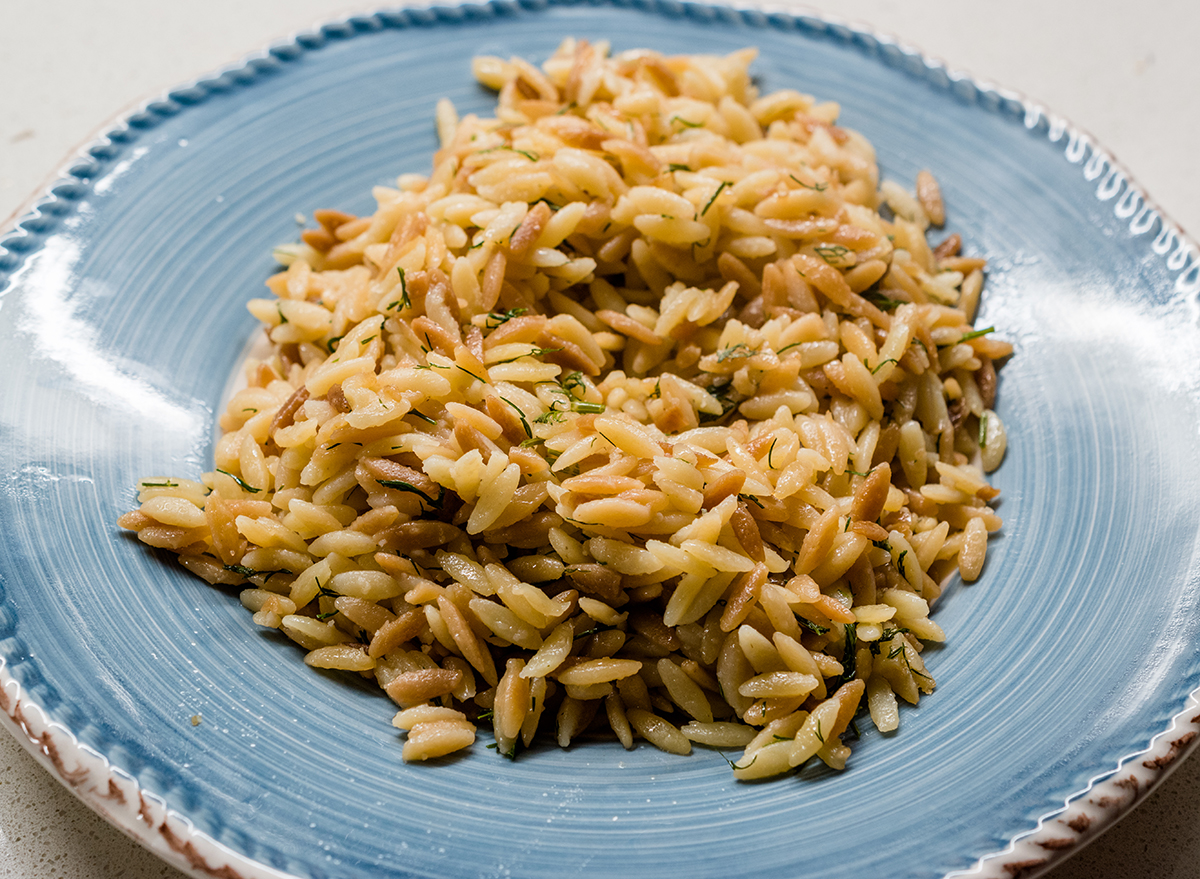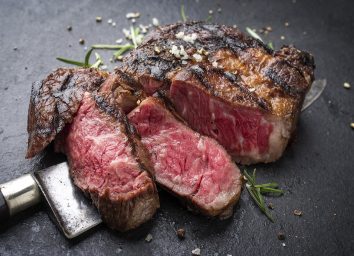Is Orzo Pasta or Rice? What to Know About the Italian Staple

Oblong and common in Mediterranean cooking, orzo has a look of rice and the texture of pasta. So what is orzo and how did it become the frequently used ingredient that it is today?
While orzo's origins lie in Italy, it is now a staple in cooking across Europe, especially Greece, and the Middle East. In different regions, it can go by many names, including kritharaki, manestra, rosa marina, reiskornpasta, or pasta gallo pion. Its usage in North America can be traced to the mid-20th century or even earlier.
"It seems there are recipes that date back to the early 1950s in recipes like orzo pasta salad and orzo stuffed tomatoes and Betty Crocker's Chicken Orzo Soup," says Claudia Sidoti, Principal Chef at HelloFresh.
So is it rice?
"Although orzo looks like rice, it is a pasta made from semolina flour," says Sidoti.
The name itself is somewhat misleading—orzo actually means barley in Italian, but there is no barley in it. Instead, the pasta derives its name from its shape, Sidoti explained, which closely resembles the grain. But, while it might look like a whole grain, it certainly can't be thought of as one.
Orzo can also be classified as a "pastina"—which is another word to describe small pieces of pasta. Often, these smaller cuts can be used in pasta and side dishes, though orzo itself can be a very versatile ingredient.
The pasta itself is made from semolina flour, which is made from durum wheat. Because the wheat base gives it a heartier texture, it is better able to absorb the flavors of the ingredients around it, explained Dan Matthiesen, executive chef of Bookstore Bar & Café.
"Orzo is an incredibly versatile type of pasta that can be used in multiple applications," says Matthiensen. "It works well with lots of different types of proteins, vegetables, and cheese."
How is orzo cooked?
Like most pasta, orzo is boiled in a pot of water to prepare. From there, the possibilities are virtually limitless on how it can be prepared.
"Traditionally it is used in soups and sometimes as a side dish, both hot and chilled, with herbs, olive oil or butter, and parmesan cheese," says Sidoti. "Sometimes it's served chilled with a little lemon and olive oil or simple herb vinaigrette."
Chicken and orzo soup has been a staple across the Mediterranean that can be found in most Greek restaurants today.
While the tried-and-true methods of preparation have proven their longevity, there are also modern twists on recipes that really let this ingredient shine. For Sidoti, that includes "orzotto"—a hybrid risotto dish that uses orzo in place of rice.
"People seem to love our orzotto recipes," says Sidoti. "We cook it similar to risotto and incorporate sausage, herbs and parmesan cheese. We also have a great one-pan cheesy pesto orzotto recipe which customers love."
What makes orzo unique?
Orzo cooks relatively quickly. While it can take time for a pot of rice to cook and soften, it can often be plated and eaten in just a few minutes.
"Orzo really expands when you cook it," says Sidoti. "If adding to soup, I like cooking it separately and then stirring in at the end just before serving, that way you prevent it from absorbing all the broth."
Whatever recipes it ends up being used in, one thing is for certain—orzo's lasting impact on cuisine is here to stay. It can be found commonly in restaurants and among home cooks, alike.
"I have used orzo frequently in my cooking over the years and enjoy cooking with it," says Matthiesen. "I highly recommend using it in your cooking."








